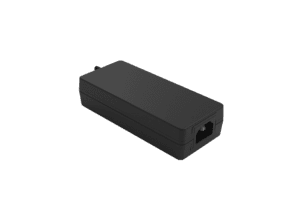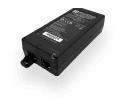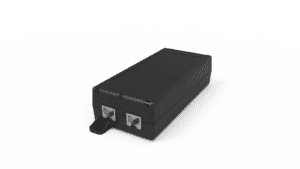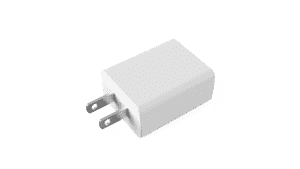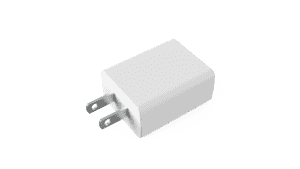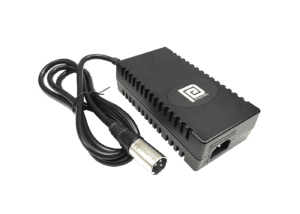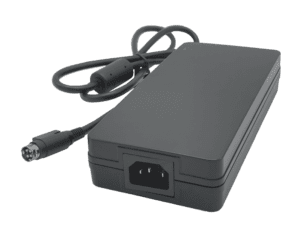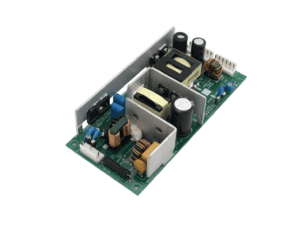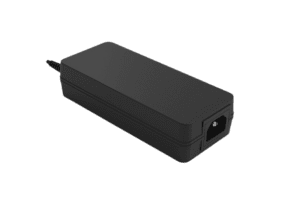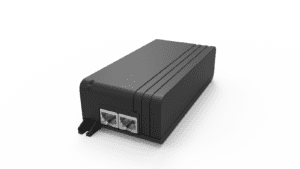BLOG
Power over Ethernet Design: Mastering Effective Network Planning and Implementation Strategies
Table of contents

Power over Ethernet (PoE) technology simplifies network installations by delivering power and data over a single Ethernet cable. As businesses adopt PoE solutions to enhance their network infrastructure, mastering effective network planning and implementation strategies becomes crucial. This article explores the fundamentals of PoE design, key considerations for planning, top implementation strategies, and best practices for optimizing network performance. Phihong USA, a leading provider for OEM and manufacturing solutions, offers advanced PoE products designed to support efficient and scalable network deployments.
Understanding PoE Design: The Fundamentals
PoE design involves creating a network infrastructure that efficiently delivers power and data to connected devices. Key components include power sourcing equipment (PSE), powered devices (PD), Ethernet cables, and network switches. Effective PoE design ensures reliable power delivery, data transmission, and overall network performance.
Key Considerations for Effective PoE Network Planning
Effective PoE network planning involves several key considerations to ensure optimal performance and reliability. These considerations include power budget calculations, network topology, and device placement.
Power Budget Calculations
Calculating the power budget is essential to ensure that the PSE can deliver sufficient power to all connected PDs. This calculation considers the power requirements of each device, cable length, and potential power loss.
Network Topology
Designing the network topology involves determining the layout of devices and cabling. A well-planned topology optimizes cable lengths, minimizes power loss, and ensures efficient data transmission.
Device Placement
Strategic device placement enhances network performance and reliability. Placing PSEs and PDs in optimal locations reduces cable lengths, minimizes power loss, and ensures effective coverage.
The Benefits of Network Planning
- Enhanced Power Management: Thorough power budget calculations ensure that the Power Sourcing Equipment (PSE) delivers adequate power to all connected Powered Devices (PDs), preventing power shortages and ensuring efficient operation.
- Optimized Network Topology: A well-designed network topology minimizes power loss and optimizes cable lengths, improving data transmission efficiency and overall network performance.
- Improved Device Placement: Strategic placement of PSEs and PDs reduces cable lengths and power loss, enhancing coverage and reliability across the network.
Top Strategies for Implementing PoE Systems
Implementing PoE systems requires strategic planning and execution to ensure efficient and reliable network operations. Key strategies include phased implementation, testing and validation, and leveraging advanced technologies.
Phased Implementation
Implementing PoE systems in phases allows for gradual integration and minimizes disruptions. This approach enables businesses to test and validate each phase before moving on to the next, ensuring smooth deployment.
Testing and Validation
Thorough testing and validation of PoE systems ensure that all components function correctly and meet performance standards. Testing includes verifying power delivery, data transmission, and network stability.
Leveraging Advanced Technologies
Incorporating advanced technologies such as smart PoE switches and power management tools enhances the efficiency and performance of PoE systems. These technologies provide real-time monitoring, automated adjustments, and improved management capabilities.
Top Benefits Implementing These Strategies
- Reduced Downtime: Gradual implementation and thorough testing minimize network disruptions, ensuring continuous operations.
- Enhanced Performance: Advanced technologies optimize power delivery and data transmission, improving overall system performance.
- Scalability: Phased implementation allows for easy scalability, accommodating future network expansions and upgrades.
- Cost Efficiency: Efficient power management and reduced downtime lead to significant cost savings over time.
- Improved Reliability: Rigorous testing and validation ensure that the PoE system is robust and reliable, reducing the risk of failures.
- Better Network Management: Real-time monitoring and automated adjustments provide better control and management of the PoE system, enhancing operational efficiency.
Implementing these strategies ensures that your PoE network is not only efficient and reliable but also capable of meeting future demands and technological advancements.
Best Practices for Optimizing PoE Network Performance
Optimizing PoE network performance involves implementing best practices that enhance efficiency, reliability, and scalability. These practices include regular maintenance, monitoring, and upgrades.
Regular Maintenance
Conducting regular maintenance checks on PoE systems ensures that all components function correctly and efficiently. Maintenance includes inspecting cables, cleaning connectors, and verifying power delivery.
Monitoring and Management
Using monitoring and management tools provides real-time insights into network performance. These tools help identify potential issues, optimize power usage, and ensure efficient operation.
Upgrades and Scalability
Planning for future upgrades and scalability ensures that PoE networks can adapt to changing needs and technological advancements. Upgrading components and expanding the network supports growth and enhances performance.
Top Benefits Implementing Best Practices
- Increased Efficiency: Regular maintenance and monitoring ensure that the PoE system operates at peak efficiency, reducing power wastage and improving overall performance.
- Enhanced Reliability: Proactive maintenance and real-time monitoring help in the early detection and resolution of potential issues, minimizing downtime and enhancing network reliability.
- Scalability: Planning for upgrades and scalability ensures that the network can grow and adapt to meet future demands, providing flexibility and long-term usability.
- Cost Savings: Efficient power usage, reduced downtime, and minimized need for emergency repairs translate into significant cost savings over time.
- Improved Network Performance: With optimized power delivery and well-maintained components, the network operates smoothly, providing consistent and reliable service.
- Future-Proofing: Staying up-to-date with the latest technologies and standards helps future-proof the network, making it capable of supporting new devices and applications as they emerge.
By following these best practices, organizations can ensure their PoE networks deliver optimal performance, reliability, and scalability, meeting both current and future requirements.
Ensuring Scalability and Flexibility in PoE Designs
Future-proofing a PoE design involves selecting components and technologies that can accommodate future advancements. This approach ensures that the network remains relevant and efficient as technology evolves. Here are a few tips to consider:
Scalability
Choose PoE injectors and devices that are easily replaceable without having to re-route entire setups (such as PoE switches). Using PoE injectors allows switches the opportunity to add or remove PoE injectors or devices without the need for a complete system overhaul.
Higher Power Capacity
For future-proofing, it’s always best to opt for the highest power standard available. PoE injectors are backward compatible, for instance, an 802.3bt PoE injector is compatible with PoE devices that comply with the 802.3at and 802.3af standard. This means you can mix and match devices of different PoE standards, allowing you the flexibility to accommodate any upgrades that come along the way.
Higher Bandwidth
Another consideration would be bandwidth, choosing a PoE injector that supports higher bandwidth would make a smart investment as higher bandwidth PoE injectors are also backward compatible.
Advanced Management Features
Utilize PoE switches with advanced management features, such as remote monitoring, power scheduling, and per-port power prioritization. These features help optimize power distribution and troubleshoot issues more efficiently, reducing downtime and maintenance costs.
Future-Proof Cabling
Use high-quality cabling, such as Cat6a or Cat7, to support higher data rates and power levels. This minimizes the need for frequent cable replacements as technology advances.
By incorporating these features and strategies into your PoE network design, you can create a future-proof system that remains adaptable and efficient as technology evolves. This proactive approach not only maximizes the lifespan of your network infrastructure but also ensures that it can meet the demands of future applications and devices.
Top Benefits Ensuring Scalability and Flexibility
- Cost Savings: Reducing the need for frequent upgrades and replacements saves money in the long run. Investing in scalable and flexible components ensures your network can grow and adapt without significant additional costs.
- Enhanced Reliability: Using high-quality, future-proof components increases the reliability and longevity of your network, reducing downtime and maintenance needs.
- Easier Upgrades: A flexible and scalable PoE network allows for easier integration of new technologies and devices, making future upgrades simpler and less disruptive.
- Environmental Sustainability: Future-proofing contributes to sustainability by reducing electronic waste and promoting more efficient use of resources.
By prioritizing scalability and flexibility in your PoE design, you ensure a robust and adaptable network capable of meeting both current and future needs.
Cost Implications and Budgeting for PoE Projects
Budgeting for PoE projects involves understanding the cost implications of equipment, installation, maintenance, and scalability. Effective budgeting ensures that projects are completed within financial constraints while achieving desired outcomes.
Equipment Costs
Investing in high-quality PoE equipment, including PSEs, PDs, and Ethernet cables, is crucial for reliable performance. While high-quality equipment may have higher upfront costs, it offers long-term benefits and reduces maintenance expenses.
Installation and Maintenance Costs
Installation and maintenance costs include labor, cabling, and ongoing maintenance checks. Proper planning and budgeting for these costs ensure smooth project execution and long-term network reliability.
Scalability Costs
Budgeting for scalability involves planning for future expansions and upgrades. Allocating funds for scalable solutions ensures that PoE networks can grow and adapt to changing needs without significant additional costs.
Top Benefits
- Long-Term Savings: Investing in high-quality equipment reduces maintenance expenses and offers long-term benefits.
- Reliable Performance: Proper installation and maintenance ensure reliable network performance and minimize downtime.
- Support for Growth: Budgeting for scalability ensures that PoE networks can adapt to future needs without significant additional costs.
Best Practices
- Invest in Quality Equipment: Allocate budget for high-quality PoE equipment to ensure reliable performance and longevity.
- Plan for Installation and Maintenance: Include labor, cabling, and maintenance costs in the project budget.
- Budget for Scalability: Allocate funds for future expansions and upgrades to support network growth and adaptability.
Effective PoE Design in Various Industries
Effective PoE design is vital, especially in medium-to-large industries that require a lot of interconnectivity. These applications demonstrate the versatility and benefits of well-planned and implemented PoE networks.
Manufacturing
In manufacturing, PoE networks enable seamless communication and control across automated systems, machinery, and robotics. Efficient PoE design ensures reliable power and data transmission, reducing downtime and maintenance costs.
Retail
Retail environments benefit from PoE through enhanced security systems, digital signage, and efficient inventory management. Proper PoE design supports continuous operation of surveillance cameras, point-of-sale systems, and networked displays, enhancing customer experience and operational efficiency.
Transportation
The transportation sector utilizes PoE for ticket kiosks, surveillance, and communication systems in stations and vehicles. Effective PoE design ensures these systems operate smoothly, providing safety, convenience, and real-time information to passengers and operators.
Hospitality
In the hospitality industry, PoE networks support guest services such as in-room entertainment, Wi-Fi, and smart lighting. A well-designed PoE system enhances the guest experience while optimizing energy consumption and operational management for hotel staff.
Smart Buildings
Smart buildings rely on PoE for integrated systems including lighting, HVAC, security, and access control. Effective PoE design enables these systems to communicate and function cohesively, resulting in energy efficiency, improved security, and enhanced occupant comfort.
In conclusion, effective PoE design is crucial for maximizing the benefits of interconnected systems in various industries. By ensuring reliable power and data delivery, well-designed PoE networks support operational efficiency, safety, and enhanced user experiences.
Future Trends in PoE Network Design and Implementation
The landscape of Power over Ethernet (PoE) is continually evolving, driven by technological advancements and increasing demand for efficient, scalable, and versatile network solutions. As we look to the future, several trends and innovations are poised to redefine PoE network design and implementation.
Higher PoE Standards
Today’s PoE standards, such as IEEE 802.3af, 802.3at, and 802.3bt, have laid a solid foundation for delivering power and data over a single Ethernet cable. However, future trends indicate a shift towards higher power delivery and more robust standards that can support a wider range of higher-power devices and applications.
Remote Monitoring and Management
Remote monitoring and management of PoE networks is crucial for maintaining optimal performance and ensuring quick responses to issues. Currently, Simple Network Management Protocol (SNMP) is widely used for this purpose. However, future tools will likely integrate artificial intelligence (AI) to enhance monitoring and management capabilities. AI-driven tools could provide predictive analytics, automatically adjusting power allocation and identifying potential failures before they occur. These tools would offer more granular control, adaptive responses, and improved diagnostics, ultimately leading to more resilient and efficient PoE networks.
IoT Integration in PoE Networks
The integration of Internet of Things (IoT) devices within PoE networks is set to revolutionize various industries. PoE provides a unified solution for powering and connecting numerous IoT devices, from sensors and cameras to smart lighting and HVAC systems. This integration will facilitate real-time data collection and analysis, enabling smarter decision-making and more efficient operations. In smart buildings, for instance, PoE-powered IoT devices can communicate seamlessly, optimizing energy usage, enhancing security, and improving occupant comfort. As IoT ecosystems expand, PoE networks will play a pivotal role in supporting their growth and ensuring reliable power and data connectivity.
In conclusion, the future trends in PoE network design and implementation point towards a more powerful, efficient, and integrated approach. With advancements in standards, power management, smart technology integration, infrastructure, security, scalability, and support for new applications, PoE is set to play a pivotal role in the next generation of network solutions.
CLIENT'S QUOTE
Phihong's Power-Over-Ethernet solutions have transformed our network, boosting efficiency and reducing costs. Their seamless integration has simplified both installation and maintenance.
Explore More with Phihong USA
As we conclude our exploration of PoE technology, it’s clear that this field is experiencing unprecedented growth. For over 50 years, Phihong has been at the forefront of innovation, serving Fortune 500 companies across various industries as a leading power supply manufacturer for OEMs.
Phihong’s leadership, particularly in advanced technologies like Power over Ethernet, extends to active contributions in the development of IEEE PoE standards. This involvement underscores our commitment to innovation and dedication to providing cutting-edge power solutions that will shape the future of technology.
In addition to custom power supply solutions, Phihong offers a diverse range of products, including:
- Power over Ethernet (PoE) Solutions: PoE injectors, splitters, media converters, and more
- AC/DC Adapters and Power Supplies: USB adapters, desktop adapters, industrial-grade power supplies, and more
- Battery Chargers: Chargers for lithium-ion and lead-acid batteries
- Medical Power Supplies: Specialized power supplies that meet stringent healthcare requirements
By partnering with Phihong USA, you are choosing a trailblazer in power technology. If you’re an OEM looking for a custom PoE solution or just looking for a quality product, call us today: 510-445-0100 or email us at usasales@phihongusa.com. We look forward to collaborating with you.

Contact Our Team Today!
Our dedicated sales team and international partners are prepared to support you with your latest projects and initiatives globally.
FAQ
What are the key considerations for effective PoE network planning?
Effective PoE network planning involves several key considerations, including power budget calculations, network topology, and device placement. Calculating the power budget ensures that the PSE can deliver sufficient power to all connected PDs. Designing the network topology optimizes cable lengths and minimizes power loss, while strategic device placement enhances network performance and reliability. These considerations are crucial for creating a well-planned PoE network that delivers reliable power and data transmission.
How can businesses optimize PoE network performance?
Businesses can optimize PoE network performance by implementing regular maintenance, using monitoring and management tools, and planning for scalability. Regular maintenance checks ensure that all components function correctly and efficiently. Monitoring and management tools provide real-time insights into network performance, helping identify potential issues and optimize power usage. Planning for future upgrades and scalability ensures that PoE networks can adapt to changing needs and technological advancements, supporting long-term efficiency and performance.
What are the benefits of modular design in PoE networks?
Modular design in PoE networks offers several benefits, including easy expansion, long-term relevance, and flexibility. A modular approach simplifies adding new devices and components without significant reconfiguration, supporting scalability. Future-proofing PoE designs with modular components ensures that the network remains efficient and relevant as technology evolves. Adaptable solutions allow PoE networks to adjust to changing needs and requirements, enhancing their flexibility and long-term viability.
How do advanced technologies enhance PoE efficiency?
Advanced technologies, such as smart PoE switches and power management tools, significantly enhance PoE efficiency. Smart PoE switches provide real-time monitoring and automated adjustments, optimizing power delivery and network performance. Power management tools offer insights into power consumption patterns, allowing for adjustments to reduce wastage and improve efficiency. These technologies help businesses achieve greater efficiency, cost savings, and reliable network performance by dynamically optimizing power usage and enhancing management capabilities.
What future trends are expected in PoE network design and implementation?
Future trends in PoE network design and implementation include higher power PoE standards, integration with smart technologies, and a focus on sustainability and energy efficiency. Higher power PoE standards, such as IEEE 802.3bt, support more powerful devices and advanced applications. Integrating PoE networks with smart technologies, such as AI and IoT, enhances monitoring, management, and optimization capabilities. Emphasizing sustainability and energy efficiency aligns with regulatory standards and reduces environmental impact, supporting eco-friendly practices and technologies.

